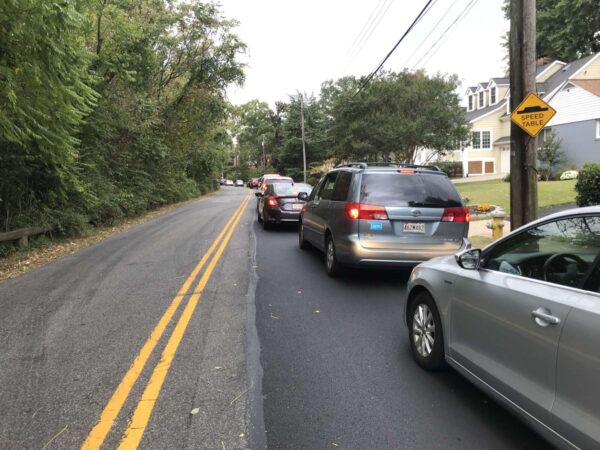
Cut-through traffic may not make many headlines here in Arlington, but it has been a big topic of conversation in our neighbor to the south.
Alexandria communities, particularly those along Duke Street, have long complained about drivers trying to beat the traffic on the main road by taking neighborhood streets. The city has even implemented a pilot program intended to cut down on cut-through traffic, which some residents say is made worse by navigation apps steering people around traffic congestion.
Outwardly, there has not been a similar outcry here in Arlington. In fact, the county — at least as of a few years ago — has actually seen traffic volumes decline on many major roads despite population growth.
But that doesn’t mean that cut-through traffic is not a concern for some. Last month a proposed new road segment in Douglas Park was put on hold, in part due to worries about cut-through traffic. Last year, cut-through traffic was brought up as VDOT considered various plans to turn Route 1 in Crystal City into an “urban boulevard,” which raised the possibility of some existing traffic spilling onto neighborhood streets.
In 2017, meanwhile, an Aurora Hills resident said in a letter to the editor that changes to S. Eads Street resulted in cut-through traffic in her neighborhood. (To our knowledge, that particular concern has faded in recent years.)
Typically, when traffic on local roads becomes a significant safety concern in Arlington, the go-to action for the county government is to slow rather than restrict traffic, by implementing traffic calming measures, like speed bumps, narrowed lanes and reduced speed limits. But there are still examples of local streets near schools, for instance, with restrictions intended to prohibit cut-through drivers, as well as other instances in which a road was split into two dead-end sections for similar reasons.
This morning we’re wondering whether, in 2022, Arlington residents consider cut-through traffic to be a significant problem here.

